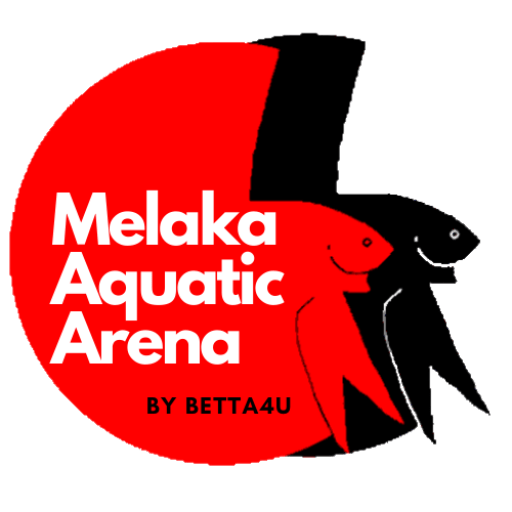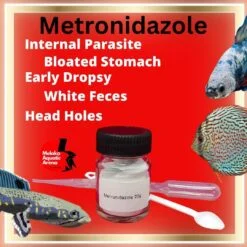MAA Blog, Aquatic Health and Diseases
Understanding Velvet Disease in Aquarium Fish: Causes, Symptoms, and Treatment
Understanding Velvet Disease in Aquarium Fish

Fish: Causes, Symptoms, and Treatment
Common Names: Velvet, Rust, Gold Dust Disease, Oödinium
Disease Type: Parasitic skin flagellate
Causing Organism: Oödinium pilularis
What is Velvet Disease?
Velvet disease, also known as Rust or Gold Dust Disease, is a common and deadly condition in aquarium fish, capable of wiping out entire tank populations before the owner is aware of the issue. This disease is caused by a tiny parasite from the Oödinium species, a type of dinoflagellate. Dinoflagellates are intriguing organisms sometimes classified as protozoa and other times as algae due to their chlorophyll content. Velvet disease can affect both freshwater and saltwater fish.
In freshwater environments, Velvet is caused by Oödinium pilularis or Oödinium limneticum, while in marine environments, Oödinium ocellatum causes a similar condition known as Coral Fish Disease. The life cycle and symptoms of these parasites closely resemble those of the well-known Ich parasite.
Life Cycle of Oödinium
The life cycle of Oödinium parasites includes three primary stages:
- Tomont Stage: The parasite rests on the water’s floor and divides into up to 256 tomites.
- Tomite Stage: These motile juveniles swim in search of a fish host, growing through photosynthesis.
- Parasitic Stage: Once a tomite finds a fish, it penetrates the slime coat, dissolving and consuming the host’s cells. Within three days, the parasite matures and detaches to restart the cycle. Without finding a new host within 24 hours, the parasite dies.
Symptoms of Velvet Disease
Identifying Velvet disease can be challenging due to the fine, often invisible pustules it produces on the fish. Key symptoms to watch for include:
- Scratching against hard objects
- Lethargy
- Loss of appetite and weight
- Loss of color
- Rapid, labored breathing
- Fins clamped against the body
- Fine yellow or rusty-colored film on the skin
In advanced stages, fish may display peeling skin. The telltale sign is a velvety film on the skin, best seen under a flashlight in a dark room. Velvet is most visible on the fins and gills and can infect all fish, including fry. Species particularly susceptible include Anabantoids, Danios, Goldfish, Zebras, and Killifish.
Treatment of Velvet Disease
Immediate action is crucial due to the contagious nature of Velvet and its rapid progression. Treatment steps include:
- Raising Water Temperature: This can hasten the parasite’s life cycle, although it may stress some fish.
- Dimming Lights: Reducing light for several days can inhibit the parasite’s photosynthesis.
- Adding Aquarium Salt: While not a standalone cure, it helps reduce parasite reproduction.
- Medication: Betta4U Velvet Cure is the preferred treatment, used for ten days to ensure complete eradication.
- Removing Carbon Filtration: Activated carbon should be removed during treatment as it absorbs the medication.
Preventing Velvet Disease
Preventive measures are vital to maintaining a healthy aquarium:
- Quarantine New Fish: Isolate new arrivals for two weeks to prevent contamination.
- Maintain High Water Quality: Regularly monitor and maintain optimal water conditions.
- Balanced Diet: Provide a nutritious diet to strengthen the fish’s immune system.
- Copper Treatment: Use Betta4U Velvet Cure to maintain a therapeutic level of copper in the tank.
By following these steps, you can significantly reduce the risk of Velvet disease and ensure a healthy, thriving aquarium environment.



FAQs About Velvet Disease in Aquarium Fish
Q: What exactly is Velvet disease, and how does it affect fish?
A: Velvet disease, also known as Rust or Gold Dust Disease, is caused by the parasitic dinoflagellate Oödinium. It affects fish by attaching to their skin and gills, dissolving and consuming their cells, leading to symptoms such as scratching, lethargy, loss of appetite, and a characteristic yellow or rusty film on the skin.
Q: How can I distinguish Velvet from Ich?
A: While both diseases are caused by parasites and have similar symptoms, Velvet’s pustules are much finer than the spots caused by Ich. Velvet pustules appear as a fine, velvety film that can be yellow or rust-colored, and are often more challenging to see without proper lighting.
Q: What triggers Velvet disease outbreaks in aquariums?
A: Velvet outbreaks are often triggered by stress factors such as poor water quality, abrupt temperature changes, and the stress of transportation. These conditions weaken the fish’s immune system, making them more susceptible to the parasite.
Q: Can Velvet affect both freshwater and saltwater fish?
A: Yes, Velvet can affect both types. In freshwater fish, it is caused by Oödinium pilularis or Oödinium limneticum, while in saltwater fish, it is caused by Oödinium ocellatum.
Q: What are the first signs that my fish might have Velvet?
A: Early signs include scratching against objects, clamped fins, lethargy, and loss of appetite. As the disease progresses, you might notice rapid breathing and a fine yellow or rusty film on the skin.
Q: Is there a specific treatment for Velvet disease?
A: Yes, Betta4U Velvet Cure is the treatment of choice, used for ten days. Other steps include raising the water temperature, dimming lights, adding aquarium salt, and discontinuing carbon filtration during treatment.
Q: Can I prevent Velvet disease from entering my aquarium?
A: Preventive measures include quarantining new fish for two weeks, maintaining high water quality, providing a balanced diet, and keeping a therapeutic level of copper in the tank with Betta4U Velvet Cure.
Q: What should I do if I suspect my fish have Velvet?
A: Start treatment immediately by raising the water temperature (if safe for your fish), dimming lights, and adding aquarium salt. Administer Betta4U Velvet Cure and ensure the tank is free of carbon filtration during the treatment period.
Q: How long does it take to treat Velvet disease?
A: The treatment with Betta4U Velvet Cure lasts for ten days, but it’s essential to monitor the fish closely and maintain good water quality throughout the treatment and recovery period.
Q: Are there any fish species particularly vulnerable to Velvet?
A: Yes, Anabantoids, Danios, Goldfish, Zebras, and Killifish are especially susceptible to Velvet disease.
Q: Can I use natural remedies to treat Velvet disease?
A: While some aquarists use methods like raising water temperature and dimming lights, these alone are not sufficient. Chemical treatments like Betta4U Velvet Cure are necessary for effective eradication of the parasite.
Q: Is Velvet disease contagious to other fish?
A: Yes, Velvet is highly contagious and can spread rapidly through an aquarium. Immediate isolation and treatment of affected fish are crucial to prevent an outbreak.
Q: What role does light play in the treatment of Velvet disease?
A: Dimming the lights helps because Oödinium parasites use photosynthesis for energy. Reducing light levels can inhibit their growth and make chemical treatments more effective.
Q: Can Velvet disease recur after treatment?
A: Recurrence is possible if the underlying stress factors are not addressed. Maintaining high water quality, proper nutrition, and preventive measures like quarantining new fish are essential to prevent future outbreaks.
By understanding and addressing Velvet disease promptly, aquarium owners can protect their fish and maintain a healthy aquatic environment.

 Metronidazole for Fish: A Comprehensive Guide 20g
Metronidazole for Fish: A Comprehensive Guide 20g 
